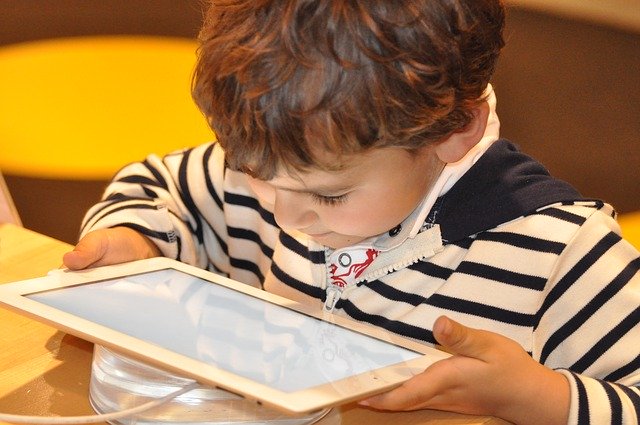
Planning Ahead
5 Fun Ways to Get Kids Into Engineering
Read a summary using the INOMICS AI tool
The future of every sector is the people driving it forward, those who are idealistic and motivated enough to push the boundaries of what’s considered possible. In the field of engineering, like every other, this is often young people. It's imperative, therefore, that kids get exposed to, and excited about, STEM education and engineering as early as possible. With that in mind here are 5 possible ways you can give your engineering-oriented child a nudge in the right direction!
 Enrol Your Child in Engineering Camp
Enrol Your Child in Engineering Camp
Okay stay with me, this is not as strange as it sounds. Camps are a great way to introduce your child to engineering as they offer fun activities that encourage the exploration of both maths and science. Educational and fun, eh? What could be better? Well, as a parent, you'll also get a bit of (potentially much needed) peace and quiet - how dreamy. Many top-rated universities sponsor events at these camps, meaning they are often very well equipped, and present them with challenging yet accessible engineering activities from which they can learn and grow.
Promote After-School Activities
Engineers do not get where they are by doing the bare minimum, they are hard and diligent workers. Getting a head start, therefore, can be super helpful. And that is where extracurricular activities come in. Engaging in extracurricular activities can help develop your child's interest in their favourite part of the field, which maybe an area the main curriculum doesn't even cover. Parents, of course, can help with suggestions based on their child's preferences, and could even help set up an after-school club themselves. An added benefit of these activities is that there are frequent local, interstate and national competitions and science fairs that kids can enjoy participating in. And maybe most importantly, it's a great opportunity for children to meet like minded peers, learn to cooperate, and further develop their interpersonal skills.
Find a Mentor for Your Kid
Aimed at the older child, mentoring can - and should - be so much more than a technical learning experience. Mentors can give students insight into competitive industries, introduce them to key social issues, teach them how to listen (always crucial), and help them evaluate solutions to potential problems. Mentoring is an integral part of learning how to be successful in any industry and especially for careers that are competitive. Providing kids with guidance from an early age helps channel their natural curiosity in healthy and productive ways.
Suggested Opportunities
- Executive / Senior Industry Job
- Posted 3 days ago
Construction Project Engineer (SCE-SAM-CE-2025-81-GRAP)
At CERN in Genève, Switzerland- Summer School
- Posted 1 week ago
Oxford Economics September Summer School
Starts 8 Sep at University of Oxford in Oxford, United KingdomUsing the Power of Play-Pretend
In the past five years there have been amazing smart, spectacular and fully “fun”ctional engineering toys or learning kits released that are perfect for the little engineer in every household. In fact, NewEngineer has a whole insight dedicated to such toys! Picking out a toy that allows the engineering-minded child to understand what goes into the design and construction of a dollhouse or any other structure is an engaging way to develop critical thinking skills, while delivering great hands-on and brains-on play.
Turn to the World Wide Web for Inspirations
In the digital age information is only a click away and there are plenty of ways to keep kids entertained online while showing them the exciting potential of engineering. Recently, there have been a few apps developed specifically for kids like the one from SOLIDWORKS which introduces the concept of CAD and product design in a fun, engaging way. The social phenomenon Minecraft is another popular way of getting kids interested in engineering thanks to the power of gamification and community involvement.
Together, these 5 fun ways to get kids into engineering provide a veritable treasure trove of toys, electronics and ways for children to learn to build programs, apps and more, all in a nurturing environment that helps them grow. Because kids are naturally curious, it remains the responsibility of adults to guide that curiosity in a constructive direction. The above does that job for you!
Ultimately, all of this will help kids appreciate arts, crafts, engineering, science projects and the Do-It-Yourself mindset – qualities that will not only help with a possible future engineering career, but also in life more generally.
-
- Master's Program
- Posted 0 seconds ago
Data Science and Business Analytics (graduate programme, 2 years, in English)
Starts 1 Oct at Faculty of Economic Sciences, University of Warsaw in Warsaw, Poland
-
- Research Assistant / Technician Job
- Posted 5 days ago
Research Assistant in Economics (Political Economy and Development Economics)
At Wyss Academy for Nature at the University of Bern in Bern, Switzerland
-
- Practitioner / Consultant Job
- Posted 4 days ago
CIVILS TECHNICIAN
At Conrad Consulting in Maidstone, United Kingdom










